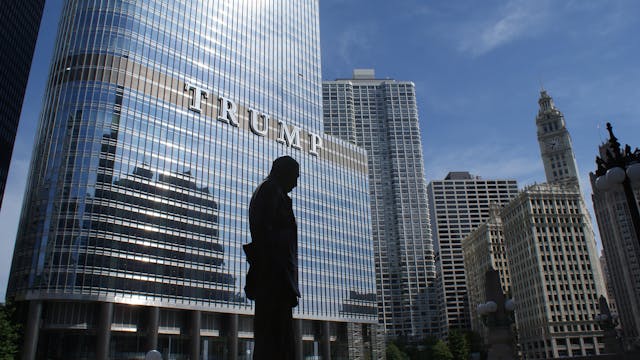In his first 100 days, President Trump approached Washington the way he once ran his business empire— fast moving, cutting deep, challenging old structures, and betting that bold, high-risk changes will deliver bigger rewards.
WASHINGTON — President Donald J. Trump has completed the first 100 days of his second term, moving swiftly to remake government operations, trade policies, and America’s role abroad — while facing a growing number of legal challenges and political tests.
At the center of the administration’s early efforts is the creation of the Department of Government Efficiency (DOGE), a sweeping new agency led by entrepreneur Elon Musk. Alongside a wave of executive orders, a shake-up of federal programs, and rising trade tensions, Trump’s second term is already reshaping the landscape in Washington and beyond.
Executive Orders Redraw the Map
Since January 20, President Trump has signed more than 140 executive orders, a pace that surpasses that of any modern U.S. president during their first 100 days.
Major directives include:
- Closing Diversity, Equity, and Inclusion (DEI) offices across federal agencies.
- Reinstating the “Remain in Mexico” policy for asylum seekers.
- Ordering all federal workers back to in-person work.
- Rolling back a wide range of environmental regulations.
- Ending remaining COVID-19 public health emergency rules.
The White House frames these moves as “restoring efficiency” and “refocusing government priorities.”
However, civil rights groups, labor organizations, and several state governments have filed lawsuits, arguing that certain changes may overstep legal boundaries or threaten constitutional protections.
Elon Musk’s DOGE: A Bold Overhaul of Federal Agencies
One of the administration’s most ambitious early actions has been the creation of the Department of Government Efficiency (DOGE), launched by executive order and placed under Musk’s leadership.
DOGE has aggressively pursued government restructuring, including:
- Restructuring agencies such as the U.S. Agency for International Development and the Department of Education.
- Laying off roughly 216,000 federal employees.
- Canceling contracts valued at an estimated $160 billion.
Administration officials claim these actions have produced historic savings and will make government “leaner and smarter.”
Critics argue that the changes are moving too quickly, bypassing necessary oversight, and risking damage to public services. Multiple lawsuits are challenging DOGE’s authority to dissolve or reorganize agencies without congressional approval.
Concerns have also surfaced regarding security clearances, after reports emerged that DOGE staff accessed sensitive systems without following standard federal protocols. Congressional inquiries are underway.
New Tariffs, Fewer Rules, and a Jittery Economy
Trump’s economic strategy has returned to a protectionist model, emphasizing tariffs, deregulation, and tax incentives for domestic investment.
Key steps include:
- Imposing tariffs on goods from China and Europe.
- Rolling back regulations across energy, construction, and telecommunications industries.
- Proposing tax breaks aimed at revitalizing rural and economically distressed regions.
Markets reacted sharply to the new tariffs, with major indexes experiencing periods of volatility before stabilizing.
Business groups and economists have raised concerns that a sustained trade war could slow growth and increase consumer costs.
Further uncertainty arose when President Trump publicly criticized Federal Reserve Chair Jerome Powell, leading to speculation about political pressure on the independent central bank, though no formal action has followed.
Harder Lines Abroad
In foreign policy, the administration has adopted a more unilateral and combative approach, reinforcing its “America First” doctrine.
Early initiatives include:
- Proposing ceasefire frameworks for conflicts in Ukraine and Gaza, with limited success so far.
- Raising tariffs against China and other strategic rivals.
- Pressuring NATO allies to meet defense spending targets.
- Withdrawing the United States from several United Nations programs focused on migration and climate change.
While officials argue that these moves protect American interests, traditional allies have expressed concern that the administration’s approach could damage international stability and weaken longstanding partnerships.
Public Opinion: A Nation Deeply Divided
Public sentiment on Trump’s early performance remains sharply polarized.
According to an April survey by Pew Research Center:
- Overall job approval stands at 40 percent.
- Approval ratings are higher on immigration enforcement and border security.
- Lower ratings are reported for economic management and foreign policy handling.
Supporters view Trump’s rapid actions as fulfilling campaign promises and restoring government accountability.
Opponents warn that the pace and scope of changes could lead to institutional instability and international isolation.
A Growing Battle in the Courts
Many of the administration’s early moves are now facing legal pushback.
Key developments include:
- Federal courts blocking changes to voter registration requirements and aspects of the DEI dismantling orders.
- State lawsuits challenging DOGE’s authority to restructure federal agencies.
- Pending litigation against new immigration enforcement measures and environmental rollbacks.
Legal experts say the outcome of these challenges could significantly reshape the limits of presidential power in future administrations.
The Road Ahead for the Trump Administration
As President Trump moves beyond his first 100 days, his administration faces a pivotal stretch that could define the trajectory of his second term.
Plans are underway for a major immigration reform package and a second round of tax cuts aimed at middle-income earners. Further federal agency consolidations under DOGE are also expected to move forward, despite pending legal challenges.
At the same time, the White House must navigate a volatile mix of court battles, economic uncertainty, and shifting diplomatic landscapes.
The coming months will test whether early momentum can translate into durable political and policy victories — or whether opposition forces will slow the administration’s ambitious agenda.






